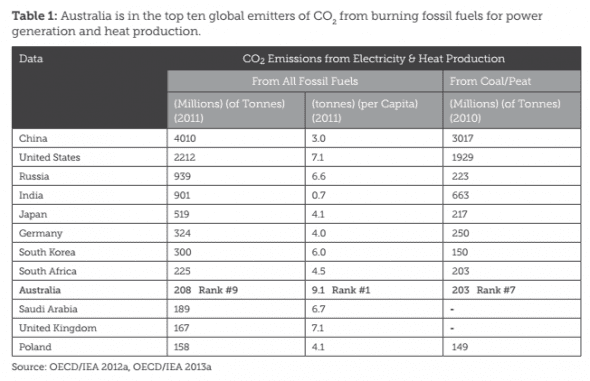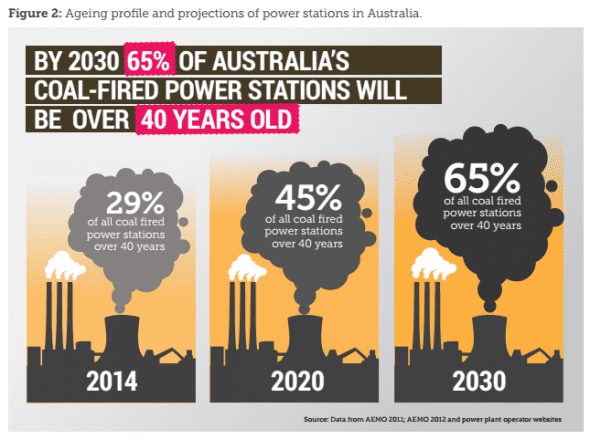Australian coal plants obsolete, uneconomic in low-carbon race
Australia’s fossil fuel-driven electricity network is outdated, inefficient and in need of urgent reform if it hopes to compete – economically and technologically – as the world moves to limit carbon emissions, a new report has found.
The report, released on Tuesday by the Climate Council – the crowd-funded independent advisory body formed after the abolition of the Climate Commission – warns that Australia’s ageing fleet of coal-fired power generators are obsolete in the race to curb carbon emissions, and would soon be rendered obsolete economically, undercut by cheaper and cleaner generation from wind energy and solar plants.
The report’s recommended low-carbon energy transition – not unlike that of its author, Andrew Stock, who has graduated from being an executive at Origin Energy to his roles in the Climate Council and as an executive at Silex Solar – is widely considered necessary to meet Australia’s national and global carbon budgets; the outer limit we can safely emit to avoid catastrophic climate change, which at current rates is on track to be exhausted in the 2030s.
But with the bulk of Australia’s coal power fleet pushing 30-plus years of age (significantly older than the globalaverage, with 90 per cent of the technology obsolete), the report argues that it must happen sooner, rather than later, with banks unlikely to finance coal plant replacement or retrofit with as yet untested and uncosted Carbon Capture and Storage (CCS) technologies, in light of the attached carbon risk.
“In little more than a decade, Australia will have a fleet of old, inefficient, costly coal fuelled power stations unsuited physically and commercially to retrofit with CCS. Given the long planning horizons for the electricity industry, Australia needs to address these crucial dilemmas before 2020,” the report says.
According to the report, Australia’s electricity sector currently accounts for 33 per cent of the nation’s greenhouse gas emissions (its single biggest source) and ranks it among the world’s top 10 biggest per capita emitters from electricity and heat: two to three times above Germany, Japan and China, and around 30-50 per cent higher than the US, Russia and South Korea.
 “Urgent action is required to prepare Australia’s electricity sector for the near future,” says the report, noting that it takes over a decade to plan, design, finance, and build major new power infrastructure.
“Urgent action is required to prepare Australia’s electricity sector for the near future,” says the report, noting that it takes over a decade to plan, design, finance, and build major new power infrastructure.
But even without the pressure of global and national carbon budgets, the report warns that coal-fired power will struggle to compete economically with renewable electricity sources, like wind and solar which, internationally, were already generally lower than the cost of coal plants with CCS.
“The least expensive zero emission option available at scale for deployment today in Australia is wind, closely followed by field scale solar PV,” says the report. “These costs are falling fast as take-up globally accelerates. Wind should be 20–30 per cent cheaper by 2020, solar PV is expected to halve in cost.”
As for gas, the report says increasing prices mean that electricity generated from wind is already competitive with new gas plants, even without CCS, and lower cost than gas with CCS.
But the report also warns that Australia is not keeping up with international investment and uptake of renewable electricity – lagging behind, in particular, in the global solar race – and will need to adapt its market and regulatory structures “to cope with the global shifts underway and accelerating growth in distributed low/zero emissions energy generation and storage.”
RenewEconomy Free Daily Newsletter


